Ground ivy (Glechoma hederacea), also known as Creeping Charlie, Field Balm, or Gill-over-the-hill, is a perennial plant belonging to the mint family (Lamiaceae). Native to regions spanning Europe, the Russian Far East, and China, this hardy plant thrives in grasslands and woodlands. Renowned for its fast-growing, evergreen trailing habit, ground ivy was widely dispersed by Saxon peoples and has since become invasive in some areas. While it is toxic to horses, it poses no harm to humans or most other animals.
| Common name | Creeping Charlie, Field Balm, Gill-over-the-hill, Ground ivy, Ground-ivy, Hay Maids, Runaway Robin |
| Botanical name | Glechoma hederacea |
| Family | Lamiaceae |
| Species | hederacea |
| Origin | Europe to Russian Far East and China |
| Life cycle | Perennial |
| Plant type | Perennial |
| Hardiness zone | 3, 4, 5, 6, 7, 8, 9, 10 |
| Sunlight | Dappled Sunlight |
| Maintenance | High |
| Soil condition | Clay |
| Soil ph | Acid |
| Drainage | Well-Drained |
| Growth rate | Fast |
| Flowering period | Spring |
| Flower color | Blue |
| Leaf color | Green |
| Fruit color | Brown, Copper |
| Fruit type | Schizocarp |
| Flower benefit | Fragrant |
I. Appearance and Characteristics
Glechoma hederacea is an aromatic, perennial, evergreen creeper of the mint family Lamiaceae. It is commonly known as ground-ivy, gill-over-the-ground, creeping charlie, alehoof, tunhoof, catsfoot, field balm, and run-away-robin. It is also sometimes known as creeping jenny, but that name more commonly refers to Lysimachia nummularia.
Glechoma hederacea can be identified by its round to reniform (kidney- or fan-shaped), crenate (with round-toothed edges) opposed leaves 2–3 cm (0.79–1.18 in) diameter, on 3–6 cm (1.2–2.4 in) long petioles attached to square stems that root at the nodes. The plant spreads either by stolon or seed, making it exceptionally difficult to eradicate. It is a variable species, its size being influenced by environmental conditions, from 5–50 cm (2.0–19.7 in) tall.
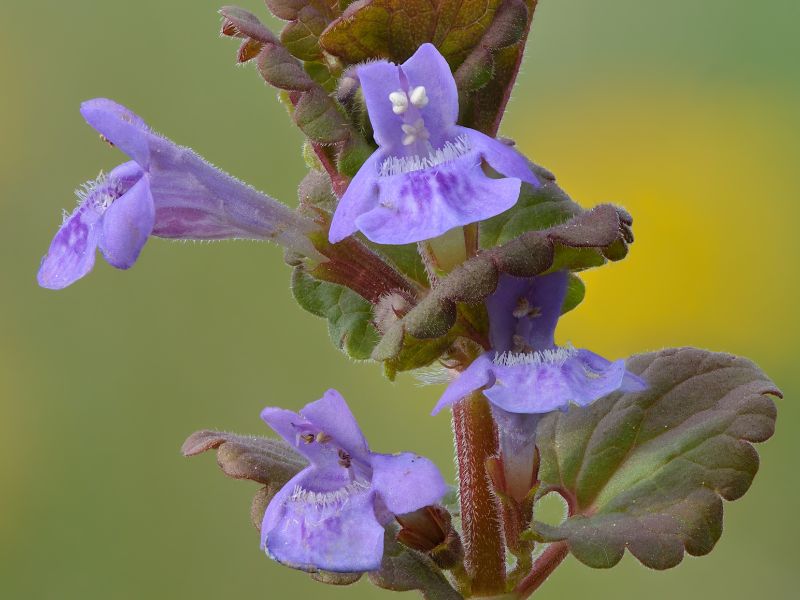
G. hederacea is sometimes confused with common mallow (Malva neglecta), which also has round, lobed leaves, but mallow leaves are attached to the stem at the back of a rounded leaf, where ground ivy has square stems and leaves, which are attached in the center of the leaf, more prominent rounded lobes on their edges, attach to the stems in an opposite arrangement, and have a hairy upper surface.
In addition, mallow and other creeping plants sometimes confused with ground ivy do not spread from nodes on stems. In addition, ground ivy emits a distinctive odor when damaged, being a member of the mint family.
The flowers of G. hederacea are bilaterally symmetrical, funnel shaped, blue or bluish-violet to lavender, and grow in opposed clusters of two or three flowers in the leaf axils on the upper part of the stem or near the tip. It usually flowers in the spring.
G. hederacea thrives in moist shaded areas, but also tolerates sun very well. It is a common plant in grasslands and wooded areas or wasteland. It also thrives in lawns and around buildings, since it survives mowing. Part of the reason for its wide distribution is its rhizomatous method of reproduction. It forms dense mats that can take over areas of lawn and woodlands, thus is considered an invasive or aggressive weed in suitable climates where it is not native.
Reproduction
Glechoma hederecea is gynodioecious, with genes being either female or hermaphrodite. The females depend upon pollen from hermaphrodites for pollination. Female flowers tend to be smaller than hermaphrodite flowers. Disagreement exists among biologists as to whether hermaphrodite flowers can pollinate themselves. The plant spends the winter as either a small ramet or a small rosette. It produces flowers between April and July, which are visited by many types of insects, and can be characterized by a generalized pollination syndrome.
Each pollinated flower can produce up to four seeds, which are dispersed by the stem bending over and depositing the ripe seeds in the ground adjacent to the parent plant, although ants may carry the seeds further. The seeds germinate a few days after contact with moisture, although they can be stored dry. Dry storage for a period up to a month is thought to improve the germination rate.
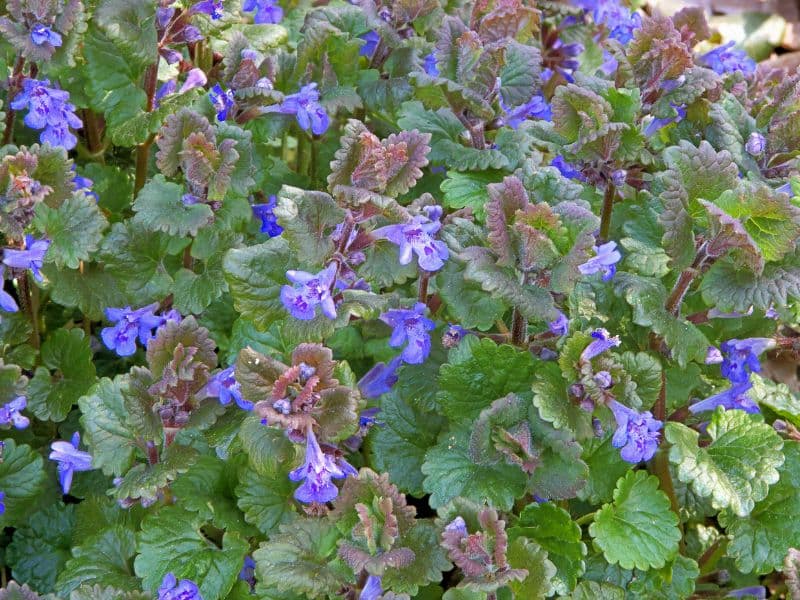
The plant can also reproduce clonally, with the stems bending down to the earth and allowing roots to attach themselves. Single clones can grow several metres across, although precise data are not available.
II. How to Grow and Care
Watering
Originating from moist and shaded woodland areas, ground ivy thrives in environments that mimic its native habitat’s humidity. This species exhibits a preference for consistent moisture without being waterlogged, maintaining a balance between hydration and drainage. Watering should be done every week to support its water habits.
Given its affinity for humid conditions, ground ivy is more commonly grown outdoors where it can benefit from natural rainfall patterns. As an evergreen plant, ground ivy’s need for water remains fairly constant throughout the year, aiding in the maintenance of its lush foliage.
Fertilizing
To ensure robust growth, ground ivy thrives with balanced nutrition fertilizers, rich in N-P-K, applied sparingly in the growing season. A monthly schedule is ideal, with a lighter dose than typically used for other plants, reflecting ground ivy’s modest feeding habits. Fertilization helps ground ivy maintain vibrant foliage and vitality. Seasonal adjustments are crucial; reduce feeding in dormant winter periods to avoid nutrient overload which can damage roots and inhibit growth.
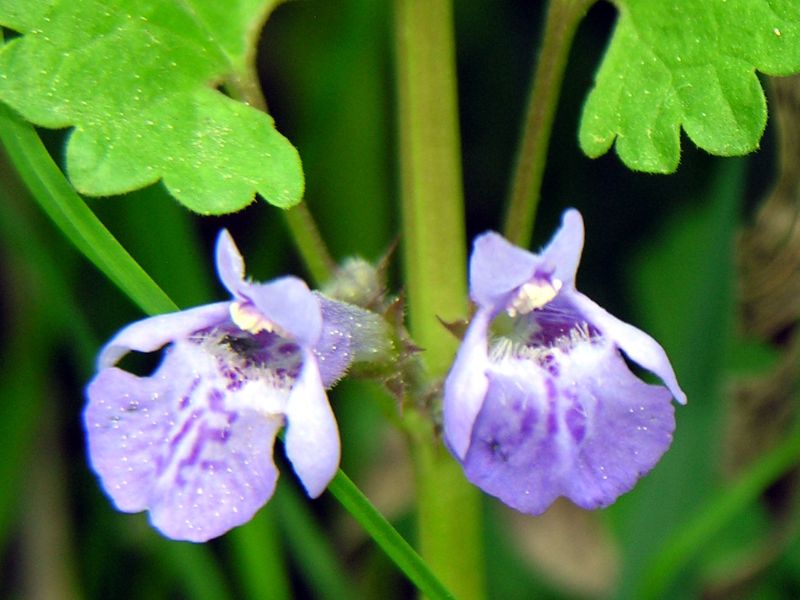
Practical tip: dilute the fertilizer to half-strength to prevent leaf burn, ensuring healthier development. Always water ground ivy after applying fertilizers to aid in nutrient absorption and avoid root burn.
III. Uses and Benefits
- Ornamental uses
The vibrant spring blooms and colorful foliage of ground ivy make this plant a decorative addition to any garden, including woodland and informal gardens. It tends to creep, which makes it perfect as ground cover in garden beds or borders. The stems can also trail from hanging baskets on sunny patios, creating an interesting effect.
- Medicinal uses
G. hederacea has been used in the traditional medicine of Europe going back thousands of years; Galen recommends the plant to treat inflammation of the eyes. John Gerard, an English herbalist, recommended it to treat tinnitus, and as a “diuretic, astringent, tonic, and gentle stimulant. Useful in kidney diseases and for indigestion.” It has also been used as a “lung herb”.
Its presence as an invasive weed in North America is the result of the value placed on it by European settlers as a medicinal herb and ale preservative; the species was imported and widely cultivated in herb and kitchen gardens. Its other traditional uses include as an expectorant or astringent, and to treat bronchitis.
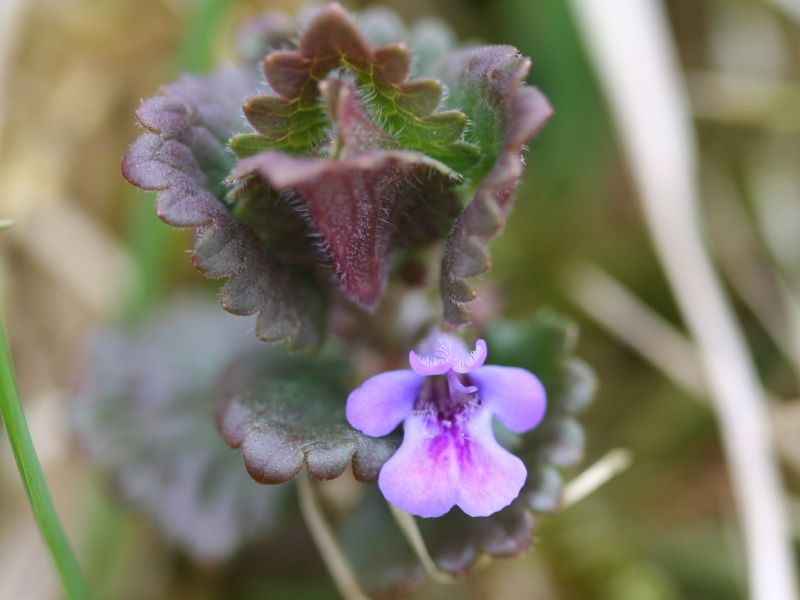
In traditional Austrian medicine, the herb has been prescribed for internal application as salad or tea for the treatment of a variety of different conditions, including disorders associated with the liver and bile, gastrointestinal tract, respiratory tract, kidneys and urinary tract, fever, and influenza.
IV. How to Control
A non-native invasive in North America, Glechoma is familiar to a large number of people as a weed, a property it shares with many others of the mint family. It can be a problem in heavy, rich soils with good fertility, high moisture, and low boron content. It thrives particularly well in shady areas where grass does not grow well, such as woodlands, although it can also be a problem in full sun.
Because the plant is stoloniferous and continues to spread from its roots or bits of stem which reroot, even small infestations resist repeated hand weeding. Like crabgrass, G. hederaceas root has a tough-to-remove ball (unbelied by its delicate wide leaves).
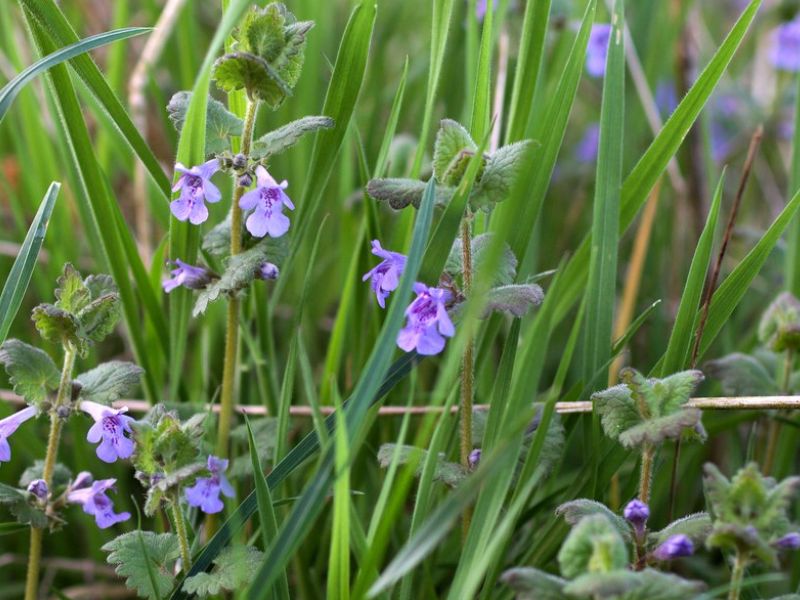
No biological control agents are known to help to reduce its spread in North America. Commercial herbicides containing triclopyr are used to control G. hederacea.
G. hederacea is also unusually sensitive to boron, and can be killed by applying borax (sodium tetraborate) in solution. However, borax is toxic to ants and to animals at only slightly higher concentrations, and does not break down in the environment. In addition to adverse long-term effects on soil or groundwater, recent research discounts the very efficacy of borax treatment, primarily because finding the correct concentration for a given area is difficult and the potential for damaging desired plants is high.
Find Where to Buy the Best Ground-ivy (Glechoma hederacea)



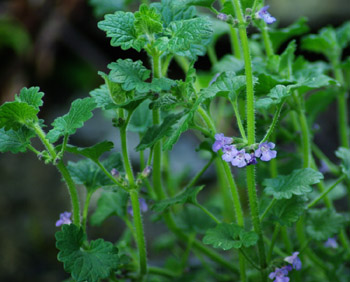












Leave a Reply